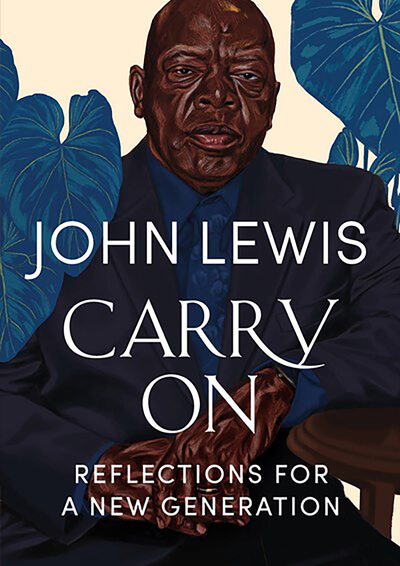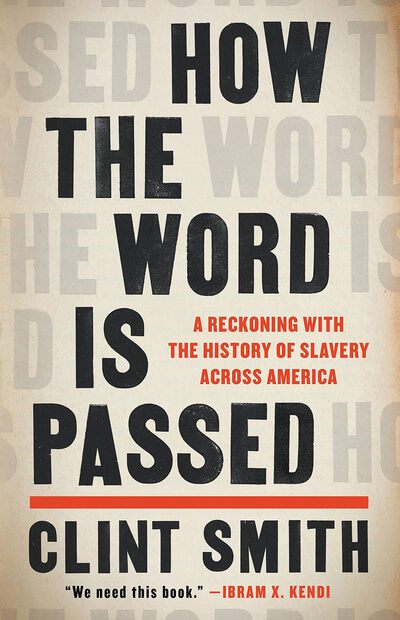With the arrival of Black History Month comes the expectation of a host of African-American books, geared not only to that unique, highly creative community but to the general population as well. Mainstream publishers now understand that there is a large readership waiting for books that reflect African-American issues and concerns, so it is not unusual that the bookshelves are full of new volumes during the month of February. In the roundup that follows, we at BookPage have selected a precious few of the large collection of books currently available.
Fiction
Some African-American literary critics often lament the alleged lack of gifted young black novelists coming up, mistakenly comparing the young lions to legends such as James Baldwin, Ralph Ellison, Toni Morrison, and Alice Walker. However, the emergence of such talents as R.M. Johnson, the author of the acclaimed The Harris Men, has quieted many of the naysayers. His latest novel, Father Found, chronicles the obsession of Zale Rowen, founder of Father Found, an organization that finds absent dads and forces them to fulfill their emotional and financial obligations. Zale's zeal for a social cause costs him dearly, bringing him to serious illness and crisis in this timely, disturbing novel that is certain to win Johnson much attention.
Venise Berry's All of Me follows her best-selling debut, So Good, with a humorous, insightful look at America's obsession with weight as Serpentine Williamson, a Chicago TV reporter blessed with the good life, learns the importance of self-esteem when everything she holds dear is threatened. This is Berry at her best, wry and knowing, using a new twist on the triumph-over-adversity motif.
While veteran novelist Kristin Lattany may be best known for her most popular book, The Landlord, her new work, Do unto Others offers us a different side of the author with the absorbing story of Zena and her husband Lucious, whose world is rocked by the entry of an unpredictable young African girl into their household. The novel is a scathing reminder of the futility of racism, the assumptions of Afrocentrism, and the occasional absurdity of political correctness.
The notion of May/December romance gets a fresh coat of paint in Patty Rice's novel Somethin' Extra, when Genie Gatlin, who specializes in safe married men, meets David Lewis, a man 30 years her senior. He shows her the full range of love and commitment, despite her fears and doubts. Rice writes with a candid, realistic view of amour that pulls very few punches.
Jeffrey Renard Allen's exceptional debut epic, Rails Under My Back, tells the complex story of the lives and loves of two brothers, Lucifer and John Jones, and their wives, Gracie and Sheila McShan. This multilayered, intricate fable delves deep into the themes of love, survival, responsibility, and trust, as the choices of the parents bear unforeseen consequences for their children. Sweeping, experimental, and rewarding.
Nonfiction
Call him an intellectual, call him an activist, Harvard University professor Cornel West is a man who defies category with an encyclopedic mind that is stumped by no topic or realm of study. His stand-out collection of social commentary, memoir, interviews, and essays, The Cornel West Reader, attests to his prowess as cultural analyst and academic philosopher-theologian with its astute observations on everything from Marxist theory and black sexuality to black-Jewish relations and rap.
A rare opportunity to enter the minds of three pivotal African-American leaders is presented by Dr. Sondra Kathryn Wilson, literary executor of the James Weldon's Johnson Papers and editor of In Search of Democracy: The NAACP Writings of James Weldon Johnson, Walter White, and Roy Wilkins 1920-1977. Every page of this collection of essays, reports, speeches, and editorials yields a wealth of information about this trio of extraordinary men.
Biographies of noted African Americans have become very popular in recent years, gaining both in quality and critical notice. Maverick social critic Michael Eric Dyson, currently Ida B. Wells-Barnett University professor and professor of Religious Studies at DePaul University in Chicago, has reinterpreted our common perceptions of civil rights Rev. Martin Luther King with his latest book, I May Not Get There with You: The True Martin Luther King, Jr. King, Dyson says, would have been a supporter of affirmative action, socialism, and a modest degree of separatism. In this controversial evaluation, the black spokesman was allegedly cynical about whites, believed America had spurned him, and suffered mightily from depression. This is a book destined to spark debate and a firestorm of criticism.
In the latest celebration of the genius of trumpeter Louis Armstrong, editor Thomas Brothers has sifted through the extensive archives of the master jazz horn man to compile Louis Armstrong: In His Own Words, an intriguing mix of letters, autobiographical sketches, magazine articles, and essays spanning Satchmo's long, eventful life. This assemblage reveals Armstrong to be a smart, clever wit, a master communicator, and a colorful human being with a heart as big as his musical sound.
With two competing books and a film on former boxing champion Rubin Hurricane Carter currently available, former New York Times reporter James Hirsch's Hurricane is one of the most engrossing takes on the ups and downs of the man who became an international cause celebre when wrongly convicted for the 1967 murder of three whites. Carter was later freed when evidence of police corruption was uncovered. Much care is taken in Hirsch's book to render Carter's spiritual and political transformation, as well as his lengthy legal battle.
Harvard University professor Henry Louis Gates Jr., the director of W.E.B. Du Bois Institute for African American Research, has been a very busy man. First he, with Lynn Davis serving as his photographer, has produced a wonderful travel book on Africa's hidden past, Wonders of the African World, following his journey through 12 of the continent's most beautiful countries. A companion to a PBS TV special, the book gets much of its distinctive flavor from Gates's inspired narrative, which is accompanied by 66 photos, seven full-color maps, and over 130 illustrations. Definitely an item worth having for anyone wishing to know more about the mystery that is Africa.
Possibly Gates's greatest achievement comes in his editing, with an assist from fellow Harvard Professor Kwame Anthony Appiah, of the landmark Africana: The Encyclopedia of the African and African American Experience. For anyone wishing to learn more about Africa or America, this resource fills the bill with over 3,500 entries, hundreds of maps, tables, charts, and photographs. Every conceivable topic, from culture to politics, is covered in detail and expertly cross-referenced in this incredible fount of facts, figures, and general information.
The release of the splendid African Ceremonies by writer Angela Fisher and photographer Carol Beckwith has been the subject of much talk in recent weeks. A spectacular visual treat, the book redefines the coffee-table volume with its breathtaking images and sensitive text on the daily ritual of tribal culture. What the book says so skillfully is that no matter how different the external trappings of regional life may appear, the age-old rites of passage remain essentially the same. National Geographic, eat your heart out.
Robert Fleming is a journalist in New York City.


























